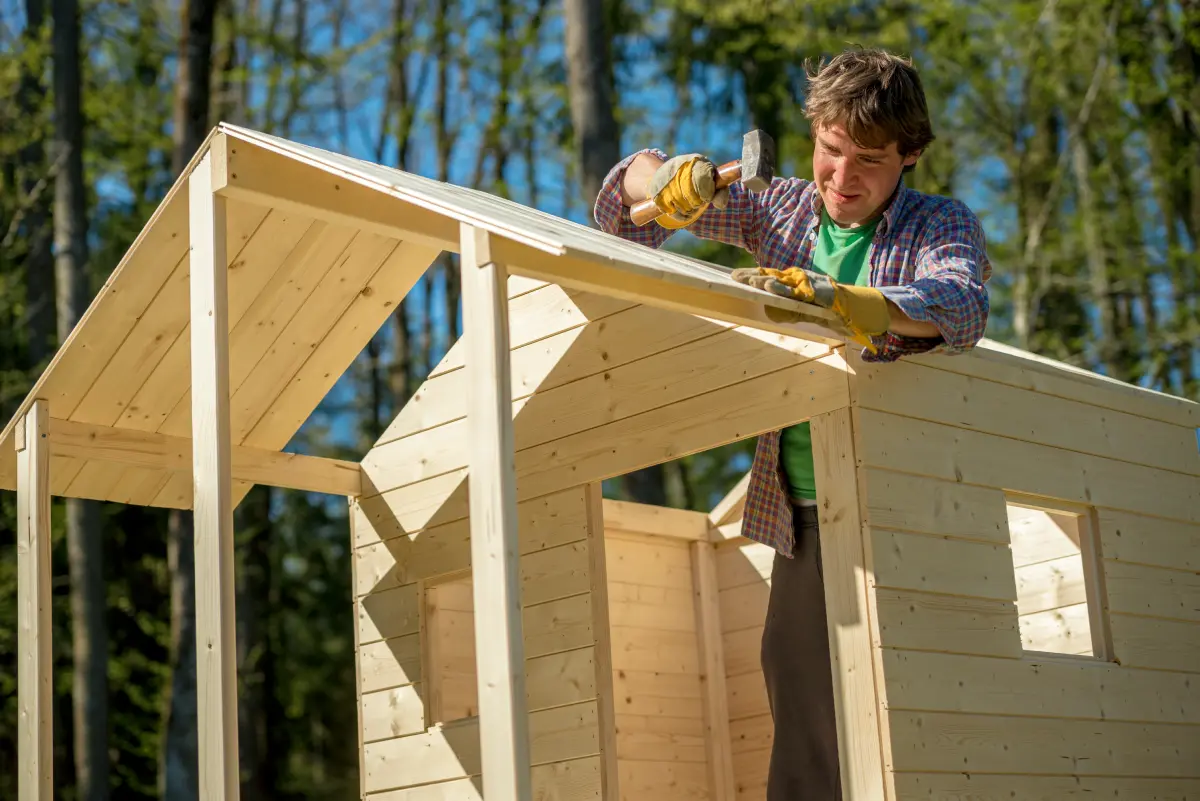Maintaining Wooden Houses: Tips for Longevity and Durability
Learn how to maintain wooden houses, log cabins & timber homes. Expert tips on moisture control, sealing, pest prevention & seasonal care from Satus Baltic.

Wooden houses combine natural beauty, excellent insulation, and an eco-friendly footprint. At Satus Baltic, we design and manufacture high-quality timber homes built to stand the test of time. But as with any organic material, wood needs proper care to preserve its appearance and structural integrity.
Whether you own a log cabin, timber summerhouse, or modular wooden garage, routine maintenance is key to ensuring durability. In this article, we share practical ways to care for your wooden home — protecting it from the elements and extending its lifespan.
Understanding the Nature of Wood
Wood is a dynamic, living material — even after installation. It expands with humidity, contracts in dry weather, and reacts to heat, cold, moisture, and UV exposure. These natural characteristics give wood its charm but also make it vulnerable.
Maintaining residential log cabins or wooden houses for sale over the long term requires a proactive care strategy based on understanding these properties.
1. Regular Inspection: Catch Issues Early
Routine inspection is the first line of defense in maintaining bespoke timber buildings. Inspect at least twice a year — ideally in spring and autumn. Focus on:
- Exterior siding and structural panels
- Roof edges, eaves, and gutters
- Window and door frames
- Wooden balconies, steps, and railings
- Foundations and lower wall joints
Check for cracks, mildew, rot, water damage, and insect activity. Early detection helps prevent small issues from turning into expensive repairs.
2. Keep Moisture Under Control
Water is wood’s worst enemy. Excessive moisture can cause swelling, decay, and fungal infestation. To protect your timber home:
- Clear gutters and downspouts regularly
- Maintain positive drainage around the foundation
- Avoid stacking firewood or plants against exterior walls
- Slope adjacent surfaces away from the structure
In moisture-heavy regions like the Baltics or Scandinavia, moisture management is critical for insulated log cabins and wooden structures of all sizes.
3. Apply Protective Coatings
A reliable finish helps guard your wooden exterior against UV rays, wind, rain, and snow. Depending on your climate and exposure, reapply coatings every 3–5 years. Choose from:
- Wood stains: penetrate the surface for a natural look with water resistance
- Paints: offer a solid barrier but conceal the wood grain
- Oil-based sealants: breathable and highly water-repellent
Proper sealing not only improves aesthetics but also preserves the structural performance of your timber cabins.
4. Control Indoor Ventilation and Humidity
Interior moisture can be just as harmful as external sources. Excess humidity affects walls, flooring, and ceilings in prefab timber homes.
- Install ventilation in bathrooms, kitchens, and attics
- Keep indoor humidity between 40%–60%
- Use dehumidifiers in winter, humidifiers in dry seasons
This helps reduce internal expansion, warping, and mold growth — ensuring comfort and durability.
5. Protect the Foundation Zone
The lower part of your wooden house is especially vulnerable to rot and pests. Safeguard this area by:
- Keeping a 30 cm clearance between the ground and wood siding
- Using gravel or pavers around the perimeter
- Avoiding splashback from rain runoff
- Keeping mulch and compost away from timber surfaces
These steps are particularly important for wooden houses for sale in regions with wet or snowy climates.
6. Monitor and Prevent Pest Damage
Wood-boring insects and termites can quietly undermine your investment. Watch for:
- Tiny holes or tunnels in beams or siding
- Piles of sawdust-like debris (frass)
- Soft or hollow-sounding wood
If you spot these, consult a pest professional. Borate-based treatments are effective, natural options — especially important in older cabins or untreated garden sheds.
7. Maintain Roofs and Overhangs
The roof is your home’s first line of defense. Roof issues can lead to serious moisture infiltration.
- Check for missing shingles or damaged tin panels
- Clean out gutters and verify water flow
- Watch for mold or moss
- Inspect attic spaces for signs of leaks
A well-maintained roof system — particularly on log cabin kits or modular houses — extends your building's life and lowers long-term costs.
8. Prepare Seasonally
Each season poses unique risks for wooden homes:
- Winter: Ensure insulation, snow guards, and roof ventilation are in place
- Spring: Check for frost damage or ground shifting
- Summer: Schedule repainting or re-sealing while conditions are dry
- Autumn: Remove debris, clean gutters, and inspect the foundation
This cyclical attention makes a big difference in long-term performance.
Investing in Longevity
At Satus Baltic, we use strong Nordic and Baltic timber for all our bespoke log cabins, wooden carports, and custom houses. But even the best materials need care.
By following a structured routine — inspecting, cleaning, sealing, and adjusting seasonally — you’re protecting your investment, maintaining value, and extending your home’s life.
Why Maintenance Matters for Satus Baltic Homes
Our FSC-certified timber buildings are engineered with durability in mind, but real longevity comes from the right upkeep.
Satus Baltic offers a wide selection of wooden homes, from compact garden cabins to modular cabins. No matter the model, we advise clients to combine quality construction with proper care.
Need help with coatings, materials, or care schedules? Our team is here to guide you.
Conclusion
Maintaining a wooden house is straightforward when you stay proactive. With consistent care, your home will remain a beautiful, stable retreat for generations.
At Satus Baltic, we believe your timber home should perform just as well as it looks — and that starts with smart, sustainable maintenance.
Need help with your wooden home?
Contact our team for expert tips, product guidance, and support tailored to your location and building type.
